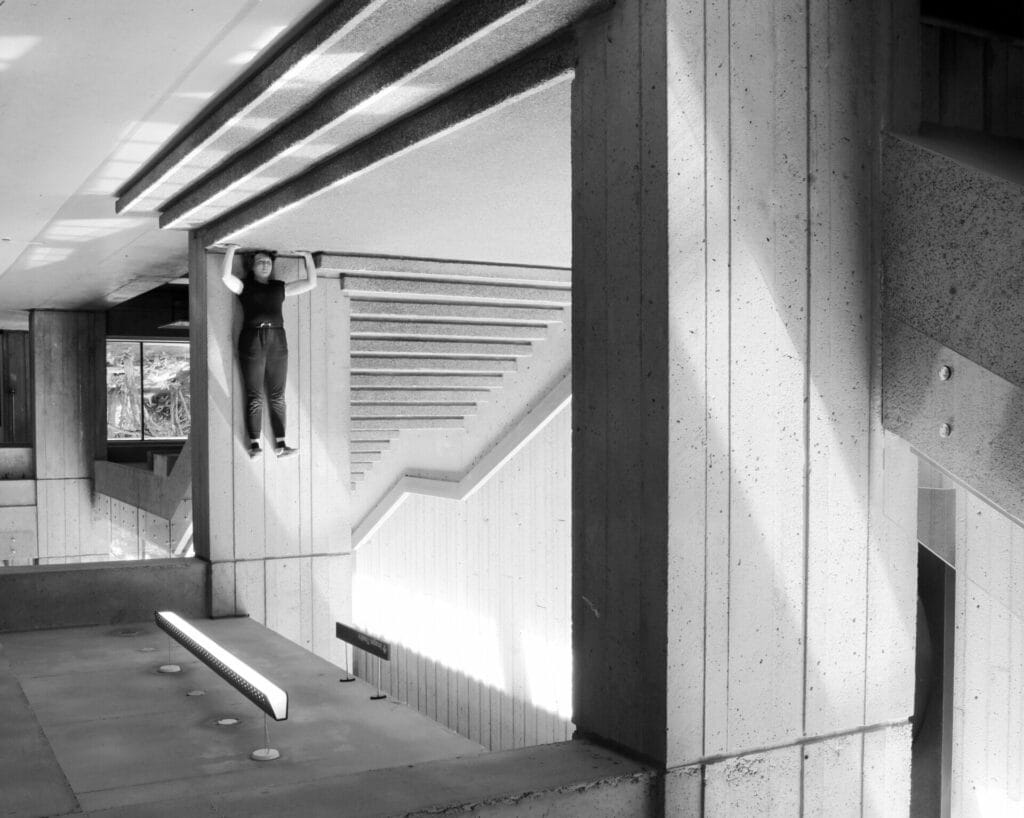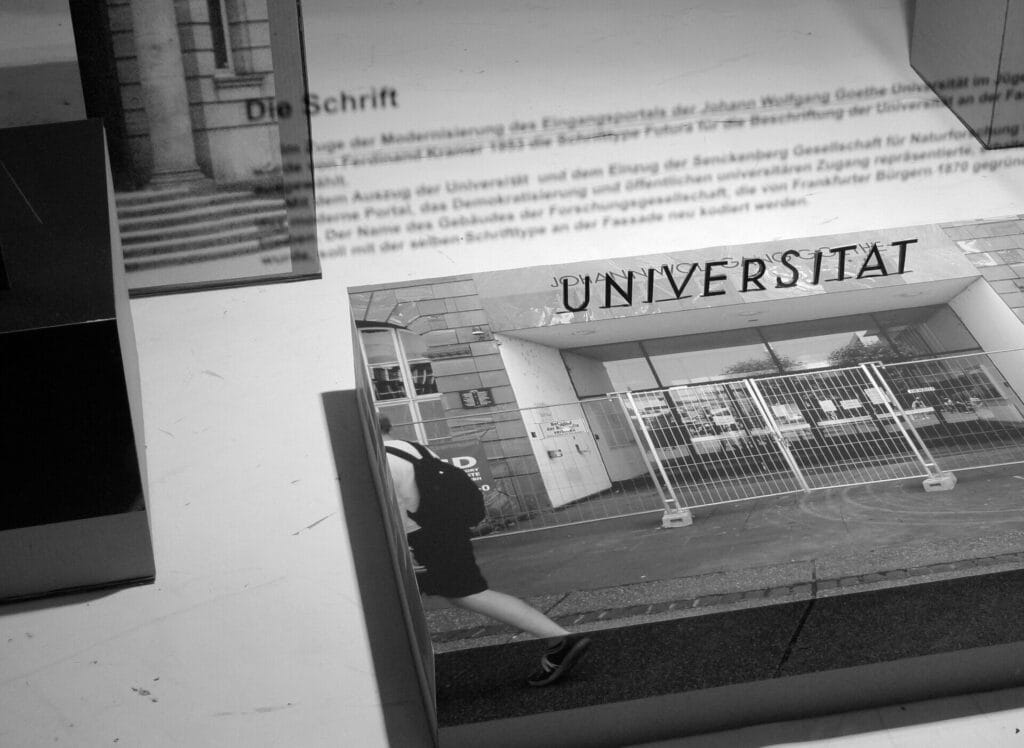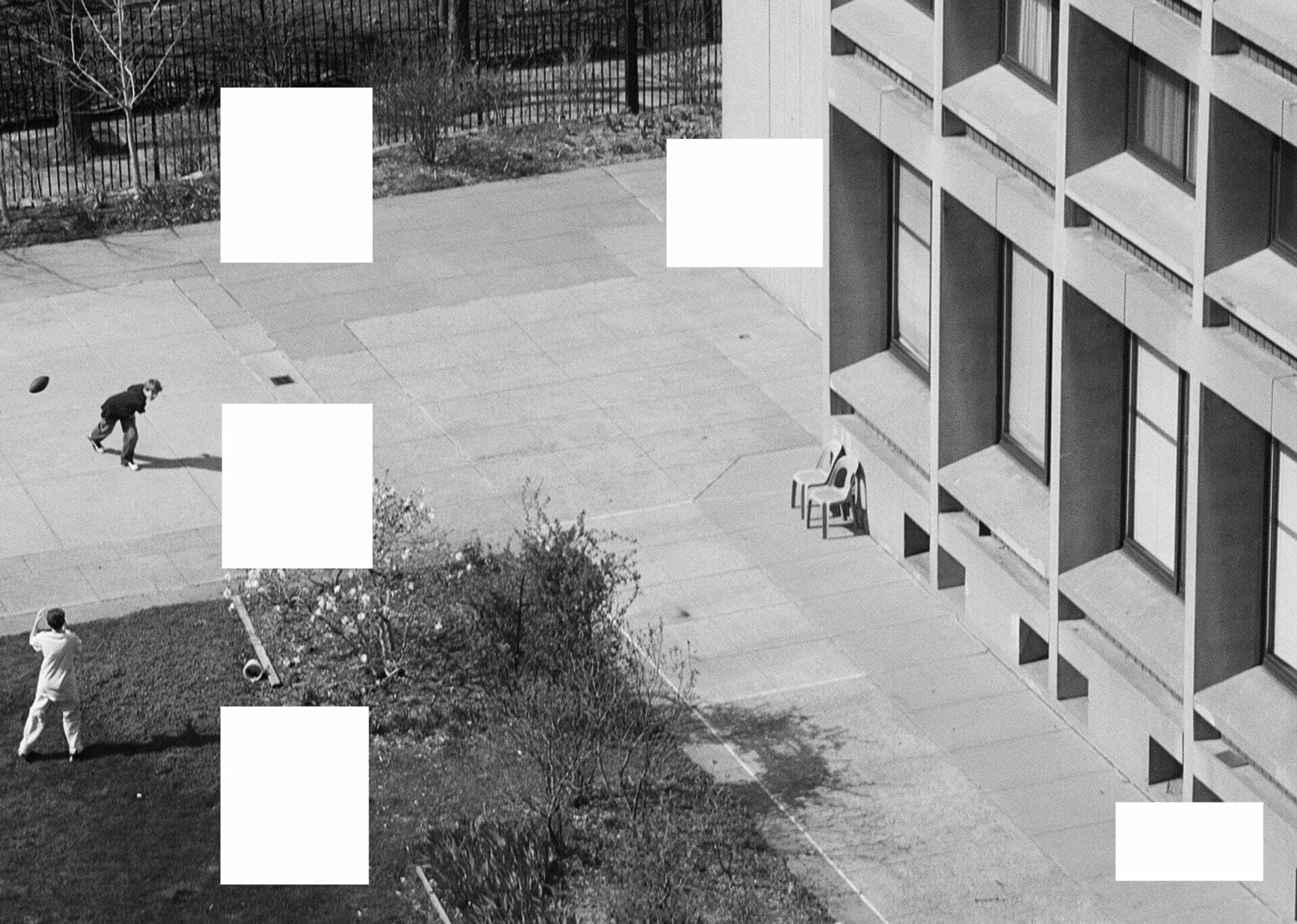On September 14, Darkroom of Educational Modernism: On Form & Function opens at station urbaner kulturen/nGbK Hellersdorf. The exhibition presents architectural photography by the artist duo Sabine Bitter and Helmut Weber. Selected works from the long-term project Bildungsmoderne/Educational Modernism are presented alongside a new commission. The works explore how colonialism, racism, and classism become visible in educational architectures.
At the latest with the expulsion of emancipative modernism from Europe after the outbreak of World War II and the establishment of the International Style in architecture, the project of modernism split into formally aesthetic and ideologically competing social and national processes. These strands can be reconnected in educational buildings.
Since the late 1990s, the artist duo Sabine Bitter and Helmut Weber have been visiting, photographing, and researching buildings and structures of postwar educational modernism, as well as the backgrounds and realities of their use, in countries as diverse as Brazil, Canada, Croatia, Nigeria, Serbia, and the United States.
Exemplary works from this long-term project examine the role and meaning of images of educational architectures in narratives of modernization from different geographies and ideologies. They explore how colonialism, racism, and classism become visible in them and how critique of the promises and crimes of modernism can be captured in terms of image politics.
The exhibition Darkroom of Educational Modernism and accompanying events ask whether and how, considering the complicity of knowledge and education with planetary exploitation processes, spaces can still be opened up today for a “critical legacy” of modernism in which other forms of knowledge are developed and conditions and ways of dealing with education that are fit for the future are made possible.

About the Works
While the campus of the Illinois Institute for Technology (IIT) in Chicago, designed by Ludwig Mies van der Rohe, is today considered a landmark of modernist architecture, most accounts of its history obscure the fact that a large section of the Bronzeville neighborhood, inhabited mainly by African-Americans, had to make way for the new building in the 1940s. According to the narrative, the alleged slum was replaced by the functionality, transparency, and rationality of modernism. The solarized images of Sabine Bitter and Helmut Weber’s series Bronzeville (2005) reveal how the modernist “architecture of light” perpetuates tropes of light and darkness in racializing discourses.
The image essay From Our House to Bauhaus – Occupy Modernity (2012) illustrates Tom Wolfe’s polemic against modernist and postmodernist architecture with 23 photographs of the Silver Towers apartment complex built by New York University. Unlike Wolfe’s essay, meaning is not produced through text here, but through images of this contested urban site, which take up both Wolfe’s polemic and critiques of it, raising questions about the potential of modernist architecture and its relationship to cities and the ways we want to life.
In Trophäen ihrer Exzellenz, photographic objects speak to the complicity between architecture and changing power relations. The work examines the transformation of Johann Wolfgang Goethe University in Frankfurt from a castle-like citizens’ university of the German Empire to a modernist mass university which housed the Frankfurt School, to neoliberal “Clusters of Excellence” within the University. Based on collaborative research with urban sociologist Klaus Ronneberger, architectural fragments and appropriations of meaning operate as trophies that mark the path to excellence. Trophies here are not only objects, but also images of the architectural and urban processes of appropriation, as well as agents for changing interests and power relations.
The multi-part photographic work Unsettler Space (2021) engages with the iconic architectures of the brutalist-modernist mega-structure of Simon Fraser University in Vancouver. Built in the 1960s by architect Arthur Erickson, the “radical campus” and its built environment were once characterized by experimental concepts of learning and teaching. The collaborative research group “Guests & Hosts” initiated by Bitter & Weber questions the narrative of this “radical campus.” To this end, the work uses the spaces of a settler-colonialist institution in shifting perspectives to disrupt prevailing Western concepts of education and knowledge. Performative interventions into the institutional spaces reclaim them as sites for Indigenous ways of knowing and learning.
Using photographs from the archives of the University of Lethbridge in Alberta, the video installation Public Seminar (2020) brings the history of its 1972 brutalist university building, designed by architect Arthur Erickson, into the present. The selected photographic documents remind us that public seminars took place in the university’s central hallway as a form of experimental pedagogy. In the video, in turn, archival materials and texts by Arthur Erickson from the 1960s on the role and mission of educational architecture are discussed, recontextualized and restaged by students in the Advanced Studio Class of the art faculty there in terms of their relevance to student life today.
The new work Die Luke (2023) looks behind the mural on the façade of the Haus des Lehrers at Berlin’s Alexanderplatz. The iconic building was constructed in the International Style by the Hermann Henselmann collective in 1961–1964. The mosaic mural Unser Leben by artist Walter Womacka – at seven meters high and 127 meters long, one of the largest in Europe – wraps around the entire building at 3rd and 4th floor level. Conceived as a meeting place for educators, the mural concealed the extensive educational library of the teachers’ association, which had survived both world wars. In the course of the renovation and privatization of the building, the library was relocated and other rooms such as the reading room, café, restaurant, bookstore, event halls, and a cabaret stage disappeared. Seeing is followed by hearing: A listening and conversation situation with writings by Brigitte Reimann, Maxie Wander, and Christa Wolf traces flaws, fractures, and hidden parts of historical narratives. Do they offer potential for a deepening criticism and fragile knowledge of history, modernism and education?

Using photographs from the archives of the University of Lethbridge in Alberta, the video installation Public Seminar (2020) brings the history of its 1972 brutalist university building, designed by architect Arthur Erickson, into the present. The selected photographic documents remind us that public seminars took place in the university’s central hallway as a form of experimental pedagogy. In the video, in turn, archival materials and texts by Arthur Erickson from the 1960s on the role and mission of educational architecture are discussed, recontextualized and restaged by students in the Advanced Studio Class of the art faculty there in terms of their relevance to student life today.
The new work Die Luke (2023) looks behind the mural on the façade of the Haus des Lehrers at Berlin’s Alexanderplatz. The iconic building was constructed in the International Style by the Hermann Henselmann collective in 1961–1964. The mosaic mural Unser Leben by artist Walter Womacka – at seven meters high and 127 meters long, one of the largest in Europe – wraps around the entire building at 3rd and 4th floor level. Conceived as a meeting place for educators, the mural concealed the extensive educational library of the teachers’ association, which had survived both world wars. In the course of the renovation and privatization of the building, the library was relocated and other rooms such as the reading room, café, restaurant, bookstore, event halls, and a cabaret stage disappeared. Seeing is followed by hearing: A listening and conversation situation with writings by Brigitte Reimann, Maxie Wander, and Christa Wolf traces flaws, fractures, and hidden parts of historical narratives. Do they offer potential for a deepening criticism and fragile knowledge of history, modernism and education?
About Sabine Bitter and Helmut Weber
Vienna and Vancouver-based artists Sabine Bitter and Helmut Weber investigate how cities, architectures, and urban territories are negotiated through images. Their photographic, spatial, and research-oriented works address moments and logics of urban transformation processes. In 2004 they founded the research collective Urban Subjects with Jeff Derksen.
Part of Berlin Art Week
The neue Gesellschaft für bildende Kunst (nGbK) is funded by the Senate Department for Culture and Community.
Exhibition
Darkroom of Educational Modernism: On Form & Function
Duration: September 15, 2023 – January 20, 2024
Opening: September 14, 2023, 7 pm
Address: station urbaner kulturen/nGbK Hellersdorf, Auerbacher Ring 41, 12619 Berlin (entrance on Kastanienboulevard, next to Lebenshilfe e.V.)
Opening hours: Thu+Sat, 3–7 pm Opening hours during Berlin Art Week: Thu–Sun, 3–7 pm
